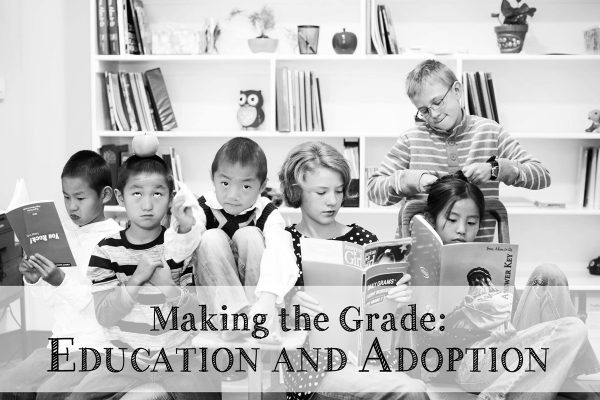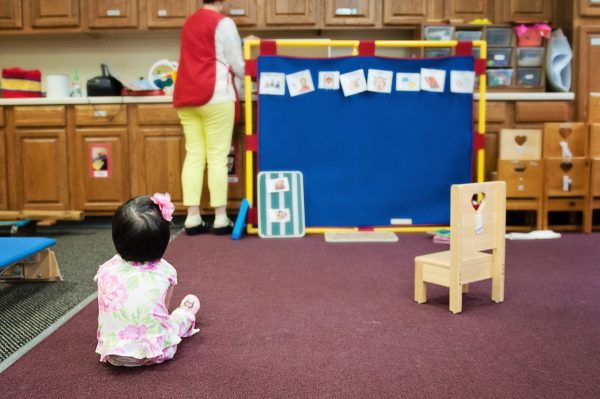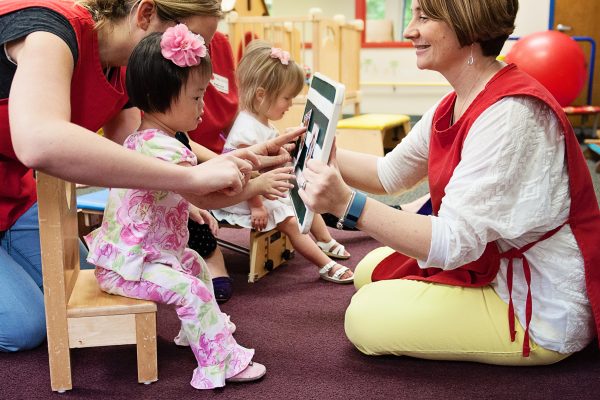
“There needs to be a lot more emphasis on what a child
can do instead of what he cannot do.”
– Dr. Temple Grandin
It’s that time of year again. The time of year when backpacks and school buses appear, but along with the excitement of back to school comes one of the biggest concerns on the minds of the moms and dads parenting children with special needs – special education. Knowing that all of the abbreviations, acronyms, and aspects can be overwhelming, and that navigating the education system is no easy task, I took to Google to find the best links and resources on the interweb.
I’ve searched countless phrases and keywords, combed through hundreds of links, and scanned a myriad of websites and the results are two great big posts of education links. In this first post we cover general resources, special education law, IDEA, LRE, getting started, evaluation and testing, IEPs, 504 plans, BIPs, and early intervention. In the second post I’ll cover SPD, ELL, therapies, transition, accommodations/modifications, and links for educators.
I hope these resources help all of the adoptive special needs parents who strive, fight, and advocate everyday for the absolute best for their children. Happy clicking!
Overview of Special Education Law
“Two of the main laws that help fund special education and protect the rights of students with disabilities are the Individuals with Disabilities Education Act (IDEA) and Section 504 of the Rehabilitation Act (often just called Section 504). The IDEA was originally passed in 1975 to make sure that children with disabilities have the opportunity to receive a free, appropriate public education, just like other children. IDEA requires that special education and related services be made available to every eligible child with a disability. Section 504, on the other hand, is a civil rights law that protects children with disabilities from discrimination.
This law governs how states and public agencies provide early intervention, and special education and related services to more than 6.5 million eligible infants, toddlers, children and youth with disabilities. Infants and toddlers (birth to 2) with disabilities and their families receive early intervention services under IDEA Part C. Children and youth (ages 3 – 21) receive special education and related services under IDEA Part B. School districts are required to provide a “free and appropriate public education” (FAPE) to each qualified student with a disability who is in the school district’s jurisdiction. Under Section 504, FAPE means regular or special education and related aids and services that meet the student’s individual educational needs.
Under the law, states are responsible for meeting the needs of eligible children with disabilities. To find out if a child is eligible for services, he or she must first be evaluated. This evaluation is free and can determine if a child has a disability, as defined by IDEA, and what special education and related services he or she may need.
Special education is instruction that is specially designed to meet the specific needs of a child with a disability. Some students with disabilities may need accommodations and other related services to help them benefit from special education. These related services may include speech-language pathology and audiology services; interpreting services; psychological services; physical and occupational therapy; therapeutic recreation; and early identification and assessment of disabilities in children.
Under the IDEA, special education instruction must be provided to students with disabilities in what is known as the least restrictive environment, or LRE. IDEA’s LRE provisions ensure that children with disabilities are educated with children who do not have disabilities, to the maximum extent appropriate. LRE requirements apply to students in public or private institutions or other care facilities.” Source: Disability.gov

General
Special Needs Resource Project by State (search for education, early intervention, support, medical, and more)
Find Your Parent Center By State (for parents of children with disabilities)
US Department of Education State Contacts
Chronic Action – Schools (for children with chronic illnesses)
Wrightslaw
Council for Exceptional Children
National Center on Accessible Educational Materials
My Child Without Limits
Learning Disabilities Association of America
IDEA – Individuals with Disabilities Education Act
What is IDEA?
IDEA Overview
US Department of Education IDEA
Free and Appropriate Public Education (FAPE)
Disability.gov – IDEA
LRE – Least Restrictive Environment
Key Legal Requirements
Considering LRE in Placement Decisions
LRE: What You Need to Know
Information on LRE
Q & A on LRE
Inclusion, Least Restrictive Environment (LRE), Mainstreaming
Getting Started
10 Basic Steps in Special Education
Which Laws Do What?
Comparison of ADA, IDEA, 504
Key Terms to Know in Special Education
Special Education Acronyms and Glossary
Special Education Dictionary
Parental Right to Participate in Meetings
25+ Letter Templates for Special Education Requests
Evaluation and Testing
Types of Tests
Private vs. School Evaluations
Understanding the Full Evaluation Process
What to Expect
What Does it Mean for Your Child?
Special Education Evaluation Overview

Early Intervention and IFSPs (Individual Family Service Plans)
Wrightslaw Early Intervention
What is an IFSP? – Writing the IFSP for Your Child
What is the Difference Between an IFSP and an IEP?
Special Education Services for Preschoolers with Disabilities
How to Communicate Effectively with Early Childhood Professionals
Milestone Moments
Understanding the Early Intervention System
NAEYC
Zero to Three
Office of Head Start
National Early Childhood Technical Assistance System
Help Me Grow National Center
504 Plans
The Difference Between IEPs and 504 Plans
Understanding 504 Plans
Chronic Action – 504 Plans
A Parent’s Guide to Section 504 in Public Schools
504 Plan Terms to Know
504 Plan Samples
504 Plan Sample 1
IEP and 504 Suggestions for Children Affected by Trauma
IEPs – Individual Education Plans
The Difference Between IEPs and 504 Plans
Understanding Individual Education Programs
What is an IEP?
US Dept of Ed: A Guide to the Individual Education Program
The IEP Process Explained
All About the IEP
IEP FAQs
IEP and 504 Suggestions for Children Affected by Trauma
IEP Roadmap: How to Seek Out Special Education Services
What Should an IEP Contain?
IEP Terms to Know
Related Services
Related Services FAQs
IEP Samples
IEP Sample 1
IEP Sample 2
BIPs – Behavior Intervention Plans
Behavior Assessment, Plans, and Positive Supports
Functional Behavior Assessment and Behavior Intervention Plans
Positive Behavioral Interventions & Supports (PBIS)
Behavior Intervention Plans: What You Need to Know
Stay tuned for post two in which we tackle SPD, ELL, therapies, transition, accommodations/modifications, and resources for educators. If you have a favorite special needs education link or resource to share, please do!


























Leave a Reply